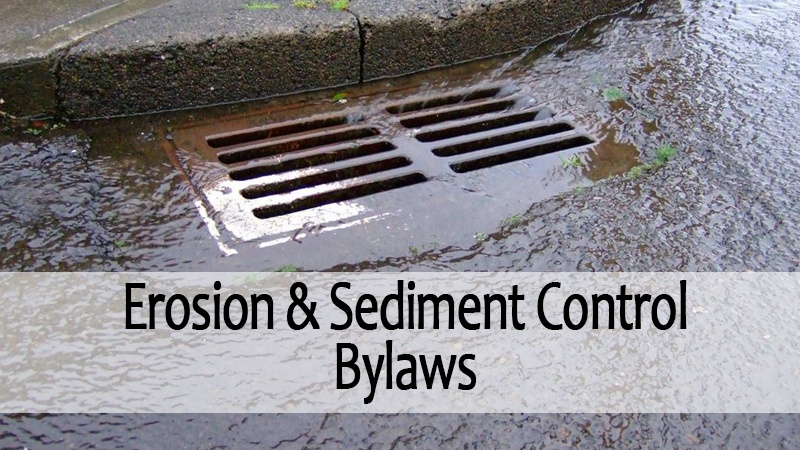Erosion and Sediment Control Bylaw standards
City councils are authorized to regulate, protect and impose requirements in relation to the protection of the natural environment in their municipalities. They are to maintain the best interests of the environmental well-being of the community that the streams, creeks, waterways, watercourses, ditches, storm sewers and drains that make up the drainage system are protected from pollution, obstructions, sediment, and sediment laden water.
The following City of Surrey documentation is an exploitation of the purpose and standards that can be set in a ESC Bylaw:
The Erosion and Sediment Control (ESC) Bylaw sets forth mandatory standards for site ESC planning and the adoption of Best Management Practices during construction.
Sediment pollution entering storm water can cause a wide range of issues such as:
-
Sediment fills up storm drains and catch basins which increases the potential for flooding.
-
Cleaning out accumulated sediment from the municipal drainage system burdens taxpayers with a considerable preventable cost.
-
Sediment in stream beds disrupts the natural food chain by destroying the habitat of small organisms.
-
Sediment effects fish, it can clog their gills, reduce their resistance to disease, lower growth rates and affect their egg development.
-
Sediment deposits in rivers can alter the flow of water and reduce water depth.
Best Management Practices
Best management practices (BMPs) were always required on construction sites but voluntary compliance was not very high and the builders and developers who were following BMPs were left with higher costs of development.
The ESC Bylaw, enacted in 2007, levels the playing field so that every construction site has to invest in BMPs. Areas where ESC has been in practice for some time show that BMPs add only 2% to the cost of development.
Discharge Standards
The ESC Bylaw specifies that no site can discharge water above 75mg/L total suspended solids (TSS).
TSS must be tested independently in a lab, but the turbidity (cloudiness) of the water can be monitored in the field using a hand held turbidity meter.
A sample measuring greater than 60 nephelometric turbidity units (NTU) is usually the trigger point where the sample must also be sent to the lab for analysis.
Erosion and Sediment Control Permit requirements
All construction sites require the use of BMPs. You’ll also need to apply for an ESC Permit if your site is greater than 2000 square meters (approximately half an acre). Larger sites are more complex and require detailed plans and an ESC Supervisor to ensure that site discharge is managed.
Source: City of Surrey




